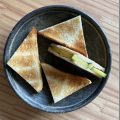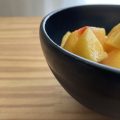
さらっと見る目次
- two items you need
- difference between expensive and affordable matcha
- “ceremonial grade” is made-up
- next time you’re in Kyoto
- items you probably have at home
- what sweets pair well with a bowl of matcha?
- how to prep your new “chasen” bamboo whisk
- simple and less cringy way to make matcha at home
- today’s special
What’s new: Turkish Delight or Lokum and Victoria Creams Peppermint in “what sweets pair well with a bowl of matcha?,” today’s special at the end
~~~
In February 2024, some things I’d obsessed about as a child started to return. It was delightful having those thoughts floating around me all the time; they’d keep me company as I went about my day.
Tentatively, nonchalantly, and one after another, I let myself do those things again. They make me happy. Aside from feeling a gush of contentment, I was pleasantly surprised. Everything felt easy this time.
The perk of restarting something you did as a young person is that you don’t have to start from scratch. You’ve been there. You’ve already done a lot of the homework. You can feel what it’s like to do the thing. You can smell the experience from where you are sitting right this very moment.
So what are the interests that I’ve gone back to? Tea ritual. Entertaining. Poetry. Singing. Kyoto. Antiquing. This is not a complete list. Some passions are better kept private, I think.
In case you’re wondering; I was a child with an old Japanese lady vibe. My childhood friend M used to recount, at various parties, her first visit to my parents’ home when we were twelve.
“Upon arrival, I was shown to a table and then served what I later learned to be a full-course meal. No Mom or Dad in sight. I asked her who cooked and she said she did. What the?”
I’m sure the food tasted undeveloped and awkward, but I was really into entertaining (as in Martha Stewart).
What were you into when you were a child? What did you like to do as a teenager? Is there something you gave up a long time ago that still makes you feel poignant? What kind of person are you?
two items you need
To start enjoying matcha at home, we only need to get two items: a bamboo whisk “茶せん chasen” and matcha, that green powder. Everything else, you probably have already. I’ll show you my matcha setup in the next section.
Guess what. The matcha I made at home (with a non-artisan bamboo whisk I found on Amazon and a packet of matcha powder I bought at a local supermarket) tasted better than the matchas served at the temples in Kamakura. Fantastic.
1. Chasen (a bamboo whisk)
My friend T and I were talking about random things.
Me: You know, I lied to you about something. I’m sorry.
T: (Dismayed look)
Me: Remember when you asked me if it was okay to use a wire whisk to make matcha? I said, “Yes, a wire whisk is fine.” That’s not true. It tastes better with a bamboo whisk. Wire whisk matcha and bamboo whisk matcha are just different drinks. I didn’t want to sound like a snob, so I lied. I’m sorry.
T: LOL. Don’t worry, I’m a tea snob myself.
2. Matcha (powdered green tea leaves)
I go to different supermarkets and buy whatever matcha they have on the shelf, usually one or two kinds at a time. No, I don’t do taste tests. This is my daily ritual. I consume diligently until I finish a packet (unless it’s undrinkably bad, which happened only once), making notes here and there on how I feel about each tea.
An unopened packet of matcha powder lasts for a long time. But once it’s open, the vibrant color and the intense fragrance go fast, in a matter of days, then weeks. For this reason, I like to buy matcha powders in small quantities. So please don’t be too precious with your matcha powder. Enjoy with a calm gusto. Share with the good people in your life.
These are my favorite affordable matcha. Both come in resealable pouches.
“Itoen Oi Ocha Uji Matcha”
Mild, smooth, with very little bitterness. It has the faintly slippery, creamy texture of more expensive matcha powders, which is what you would expect from a more traditional experience.
“Moheji Uji Matcha”
Slight bitterness depending on the water temperature (very high temp –> more bitterness). It has a light texture and refreshing aftertaste. I like it.
difference between expensive and affordable matcha
I drink matcha regardless of the price. Where I buy matcha in Japan, you get what you pay for. When I go back and forth between two matcha of different price points, of course I notice. The more expensive one has a clearer, more saturated color. The taste is deeper and more complex, usually with more umami (which I don’t always want too much of). Lick the powder off a spoon, and you’ll know what I mean. Texture-wise, the more expensive powder is finer, and airier.
“ceremonial grade” is made-up
There is no grading system for matcha in Japan.
Although the term “ceremonial grade” conveys the feeling of “This is good stuff, yo!”
next time you’re in Kyoto
I hope you’ll get to visit Ryuoen Tea Store. Their tea is ground in a stone mill at the store, fresh every day. If you’ve been there before, I hope you will bring an empty tin from your previous purchase. They will give you a bit more powder. I shall go back with my two empty tins.
On a side note, they have the best hojicha “Koetsu” ほうじ茶「香悦」. Don’t miss it.
items you probably have at home
□ cold water (I like to use filtered water)
□ hot water
□ a bowl (Standard matcha bowls are 12cm to 12.5cm in diameter. The one in the photos is a rice bowl [d = 12cm]. A cafe au lait bowl, a soup bowl, or a fruit bowl would be lovely too.
□ a spoon (I just realized that I like to use a metal spoon because I like to lick matcha powder off a spoon. You really can taste the uniqueness of a tea that way. Also, it feels wrong to lick a bamboo spoon.)
□ something on which to rest and air dry your bamboo whisk (so it’ll retain its shape and dry properly. Shall we call it a chasen rest? Let me show you the four options I have here in my home. From left to right, an empty glass jar of:
– Dijon mustard
– anchovy
– paprika powder,
– and an egg stand.
Today’s setup. I love this French egg stand and use it for anything just to have it out on my table.
□ a cup, bowl, or container in which to soak your bamboo whisk before use, and to clean it after (As shown in the photo, I use a 500ml measuring cup, which usually doesn’t leave my kitchen. I usually make matcha in the kitchen, then bring only the bowl and the plate of sweets to the table. I get better lighting out here in my office-living room for photographs.)
□ sweets (As a rule, a bowl of matcha is served with a piece of sweets. But you do you. I’ll show you what I like in the next section.)
□ a scale (I happen to like weighing my matcha powder for each bowl, but of course traditionally and historically people have always eyeballed.)
□ a thermometer (Mine broke a while ago. I’ve been making excellent matcha without one. I got a new one. I love the built-in timer that lets me know when the temperature reaches a set temp.)
□ a sifter/strainer/sieve (Lumps are evil. Two possible solutions; 1 Use a sifter, or 2 dissolve matcha powder in a small amount of cold water before adding hot water. I used to do 2 but these days I almost always sift matcha powder into the bowl, then add hot water. Why? The aroma is better, and you get the froth.)
what sweets pair well with a bowl of matcha?
Here are some of the sweets I like to serve with my tea.
Akita Morokoshi 秋田諸越
Akita = Akita Prefecture, Morokoshi = China (archaic)
They came from China to Japan during the Tang Dynasty (618 – 907, back when we called China “Morokoshi” = Land of Tang) and found their way to Akita, where they are now made, thus the name Akita Morokoshi. There are a couple of other origin stories, but this is the one I like the best.
Those tiny cookies (or should we call them candies, your thoughts?) are made of adzuki bean powder and sugar.
I usually buy two kinds of Morokoshi and serve one piece of each on a little plate for contrast. The one on the left with a seared look has been pressed, dried, then broiled. A big fan of Maillard reaction, I love the crunch and the toasty smell! The one on the right, just pressed and dried, has a softer texture.
Shinmito 真味糖
真 = Shin = true, 味 = mi = flavor, 糖 = to = sugar
A few years ago, my sister ordered a DNA ancestry kit online and had her DNA tested. Her husband identifies as Chicano and Mexican American. Her son, my nephew, is half-black American and half-Japanese. Their results contained lengthy paragraphs listing the various places across the globe their ancestors inhabited over the millennia. What a magical moment.
Hers (essentially mine, since we share biological parents) contained one sentence notifying that her ancestry is 100% Japanese as far back as the last section of the Stone Age. She wants her money back.
Sometimes I get bummed out about Japanese cuisine. Why does everything have to have soy sauce and sugar in it? That gets exhausting.
Shinmito here is walnut nougat with almost no chewy texture. And it has a distinct soy sauce flavor. At first, it tasted odd. But it started to grow on me. I’m not sure how I feel about this one yet.
Hana Ayame 花あやめ
hana = flower, ayame = iris
I got this in Kyoto. As you can see, it is extremely pretty. I’m in love with this store.
Mumon 無門
Mu = none, mon = gate: comes from a zen priest’s answer. “daido mumon” = to achieve great understanding there is no single but thousands of ways
If you don’t like natto, douchi, or aged pecorino romano, you won’t probably like this one. I wish there were an app that would let me add a smell to a photo. It’s potent. I had no idea something this stinky had a place in Tea Ceremony!
I found Mumon at the same store I got Hana Ayame. When I opened the box, there was a little piece of paper with a printed message from the shopkeeper.
“According to the books of tea, wabi (詫び)” describes something modest and simple, and “sabi (寂び) refers to the beauty that emerges with the passage of time.
It is quite difficult to understand, but I thought that mixing Daitokuji natto into the batter might give a bit of that atmosphere.
Indeed. The strong fermentation smell wafts out of the box, creating an atmosphere that has emerged with the passage of time.
Obusedo Rakugan (小布施堂 落雁)
I got this one at a neighborhood store. The ingredients are sugar, red peas, potato starch, and chestnut molasses.
It has a super silky texture. Crack a little piece and let it melt in your mouth to savor the beans and the chestnut molasses. Delicious.
Apricot crostata
I think matcha pairs well with tangy fruit such as lemon and apricot. This one I made with last year’s apricot jam. So good.
Turkish delight or Lokum
My first bite of Turkish delight (courtesy of a kind friend) was tentative and unsure. Fast forward several days, I’m a bit hooked.
Pomegranate, hazelnut, and cinnamon(?) flavors were my favorites, perfect with my very weak bowl of matcha. The chewy nutty texture is so interesting and delightful, indeed!
Each little piece is rolled in beautifully tinted coconut confetti. I love the color combination and the randomness of the sizes, shapes and placements.
Rose-scented one was not the best companion for matcha. Maybe… coffee?
But it sure is pretty.
Victoria Creams Peppermint
I discovered mint pairs well with matcha, courtesy of the same kind friend.
A thick coat of dark chocolate with peppermint cream filling that doesn’t taste like toothpaste. It tastes like mint leaves :) Delicious.
how to prep your new “chasen” bamboo whisk
0. Take the new chasen out of the package.
1. Wash it under running water. Fill a container with cold water and soak it for a minute. Discard water.
2. Fill the container with hot water and gently rinse and shake the chasen, changing water several times.
3. Shake the chasen to remove excess water and let it dry on a chasen rest. (See the “items you probably have at home” section).
My chasen resting on an empty jar of Dijon mustard.
simple and less cringy way to make matcha at home
What do I mean by less cringy?
Suppose you’re French. You’re in Japan. You see us Japanese people make fake French dishes. You shudder a little. Oui?
You’re Italian. You’re in Japan. You see us cooking soy-sauce Italian. You cringe inside, vero?
You’re Chinese. You’re in my kitchen. You see me combine condiments from Guangzhou and Beijing in one bowl. You are mortified. 对?
I am Japanese. I went to YouTube to watch folks in different parts of the world doing all sorts of things with their matcha kit. Yes, I felt it too.
We humans are making each other cringe like this, all the time. We feel that way because we care about our food and our culture. We have a need to be understood. We want people to know who we are, what matters to us, and why we do what we do. Which I think is beautiful. I hope we’ll get to talk to each other about these things, all the time.
Here’s how I make my everyday bowl of matcha. Nothing fancy, but utterly delicious. And deeply satisfying.
For myself (or for someone who likes less matcha powder + lots more water)
Matcha powder 1.0g
Water 200g/ml (or as much or as little as you like)
Water temperature 72C
Flow option 1
soak chasen bamboo whisk in cold water (this is why)
↓
have sweets ready
↓
boil water
↓
put matcha powder in serving bowl
↓
add a small amount of cold water
↓
whisk to dissolve
↓
pour hot water and whisk (matcha is done but don’t stop there)
↓
rinse chasen in a container of cold water, shake off excess water, and place on chasen rest (it takes 10 seconds max, and you’ll never have to worry about removing petrified matcha bits off those little tines)
↓
serve matcha with sweets
Flow option 2
soak chasen bamboo whisk in cold water (this is why)
↓
have sweets ready
↓
boil water
↓
using a sifter, sift matcha powder into serving bowl
↓
temper water
↓
pour tempered water and whisk (matcha is done but don’t stop there)
↓
rinse chasen in a container of cold water, shake off excess water, and place on chasen rest (it takes 10 seconds max, and you’ll never have to worry about removing petrified matcha bits off those little tines)
↓
serve matcha with sweets
For my guest (or for when I want to enjoy a more traditional bowl of matcha)
Matcha powder 2.0g
Hot water 100g/ml (or as much or as little as you like)
Water temperature 80C
Flow
soak chasen bamboo whisk in cold water (this is why)
↓
have sweets ready
↓
boil water
↓
using a sifter, sift matcha powder into serving bowl
↓
temper water
↓
pour tempered water and whisk (matcha is done but don’t stop there)
↓
rinse the chasen in a container of cold water, shake off excess water, and place on chasen rest (it takes 10 seconds max, and you’ll never have to worry about removing petrified matcha bits off those little tines)
↓
serve matcha with sweets
Be you.
today’s special
[updated 2025/06/12]
something new: Turkish Delight, Soundcloud, Carrd Pro
something read: “You Can’t Make This Stuff Up” by Lee Gutkind and “Radical Remission” by Kelly Turner, a little bit of
[updated 2024/06/20]
something new: a new fact revealed
something read: “
[updated 2024/05/24]
something new: Spotify (first time since I left them in 2009?)
something read: “Cured” by Jeffery Redger and Confessions by Augustine, a little bit of. Sarah Ruden’s new English translation of “Confessions” is amazing.
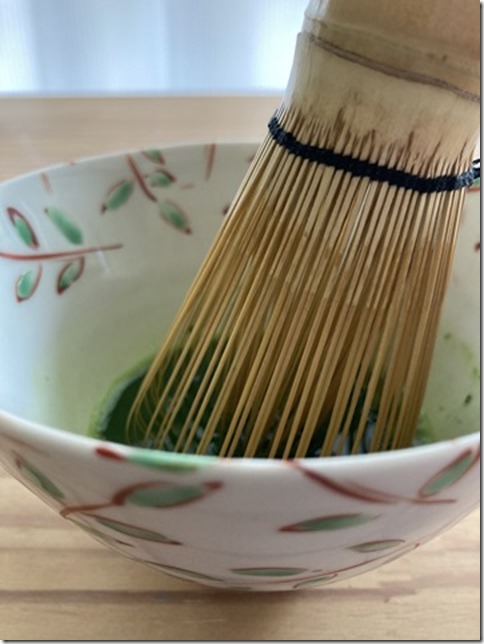
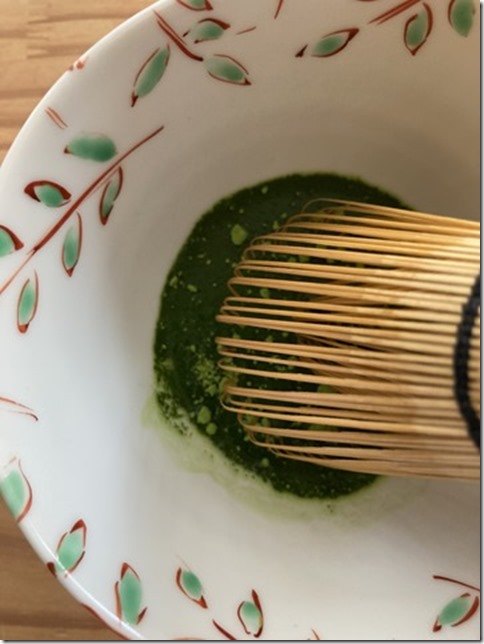
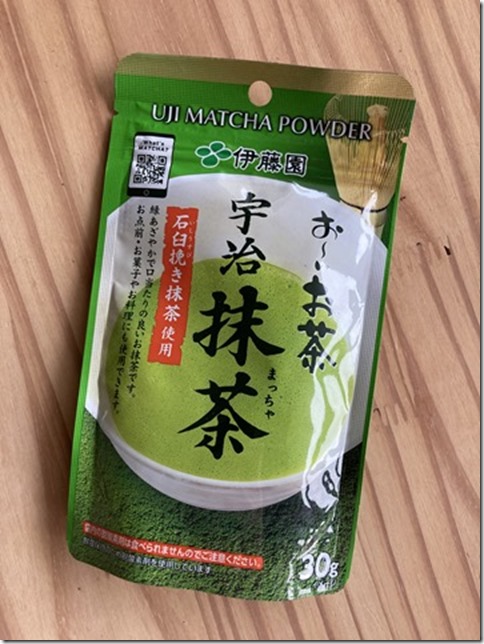

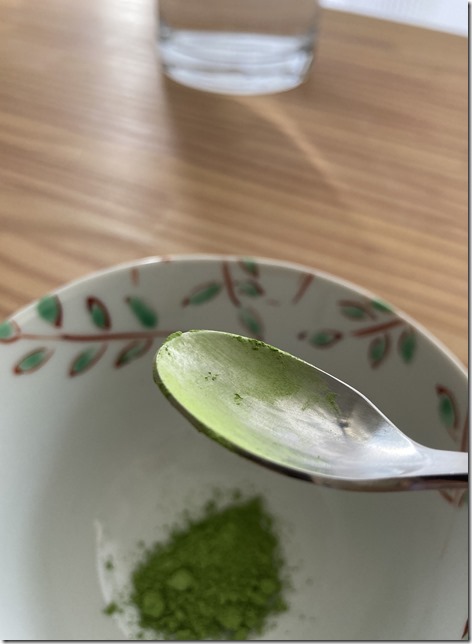
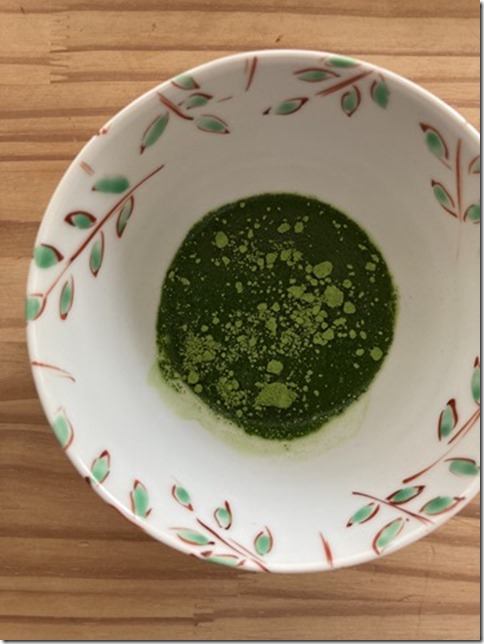

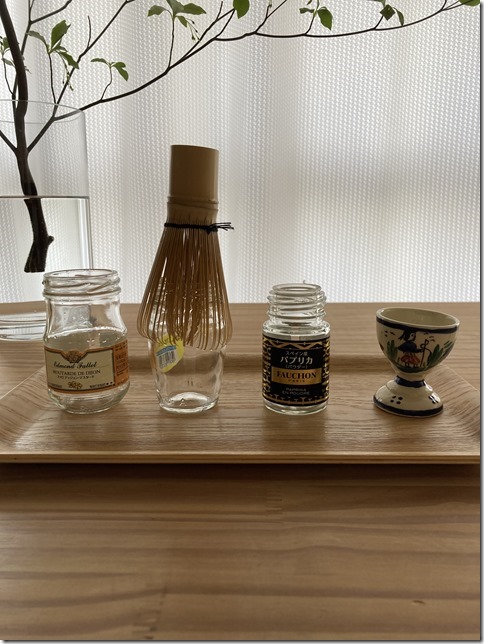
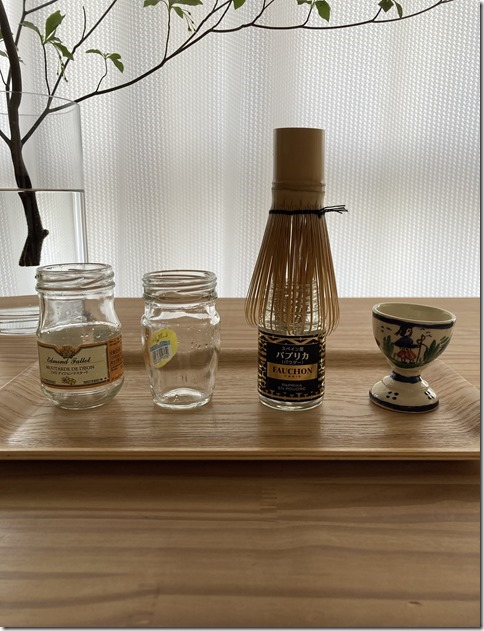

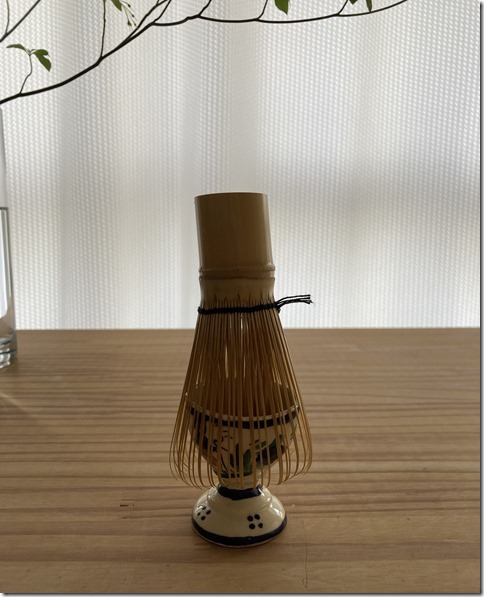

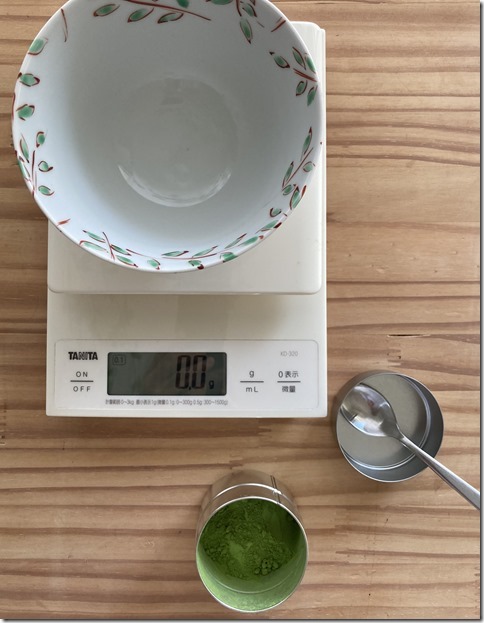
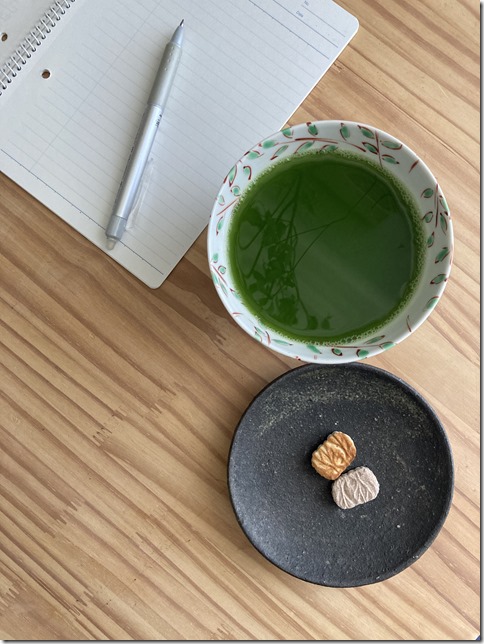
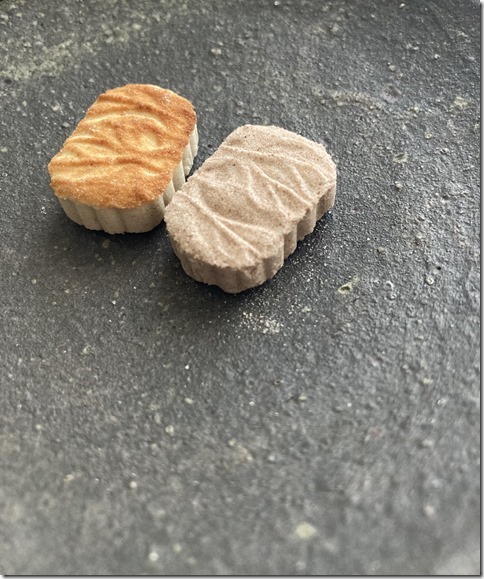

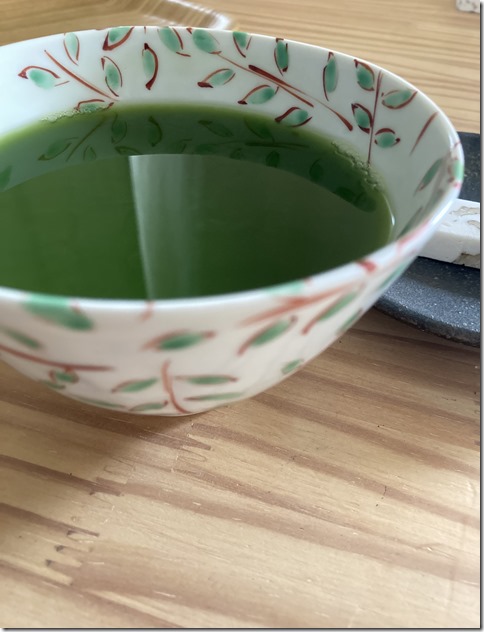
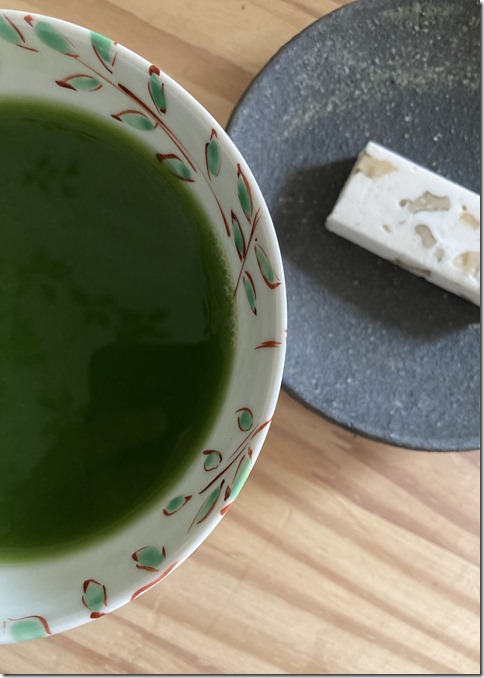
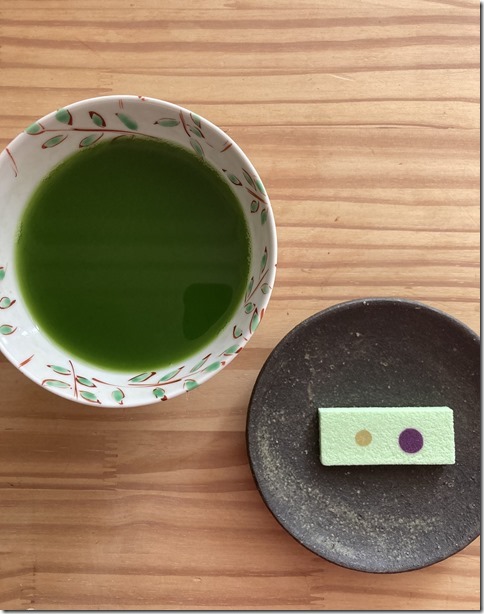
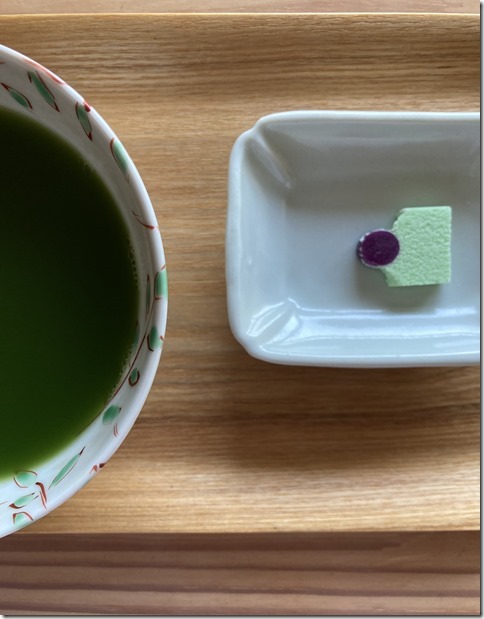
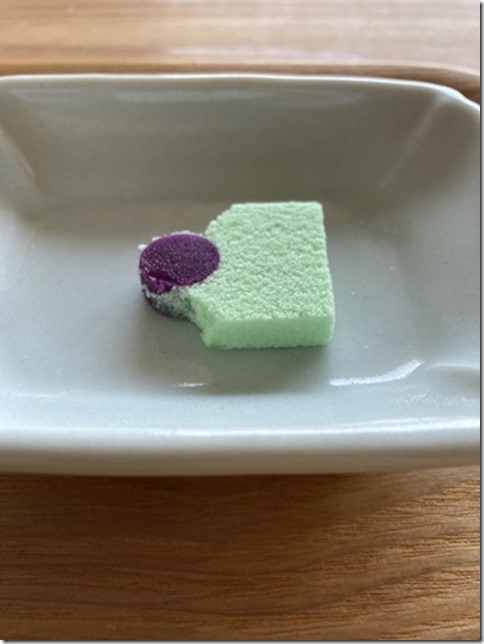

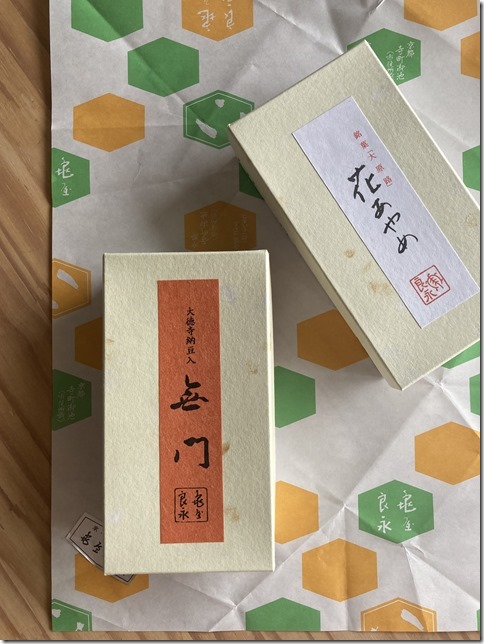
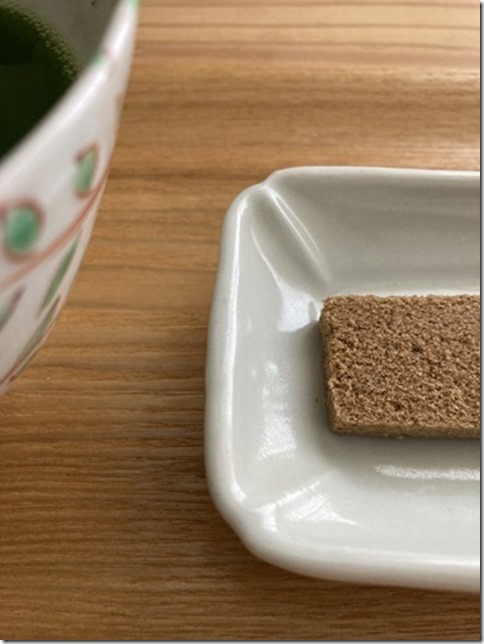
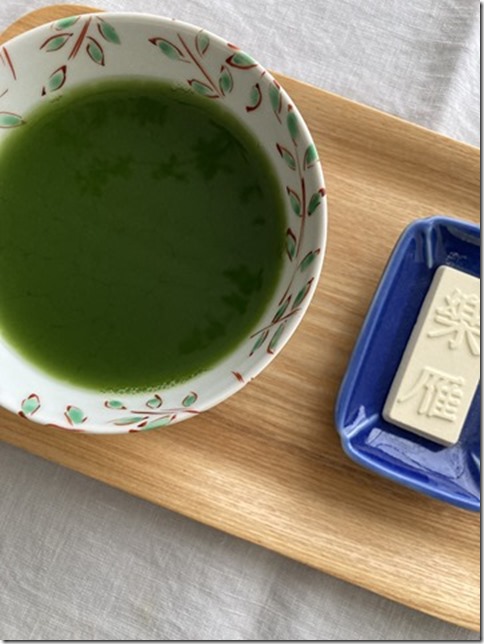
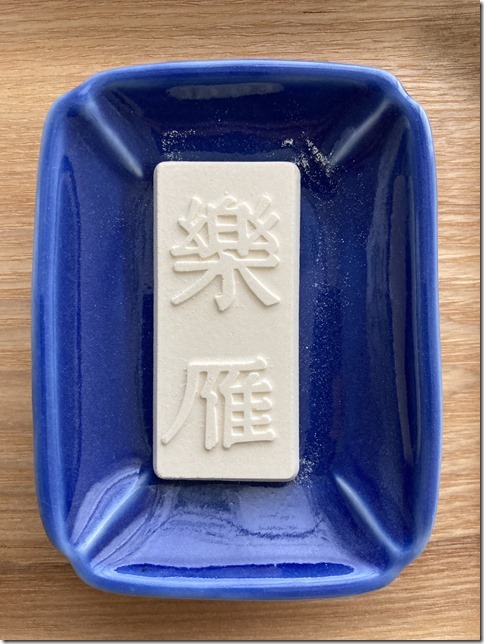

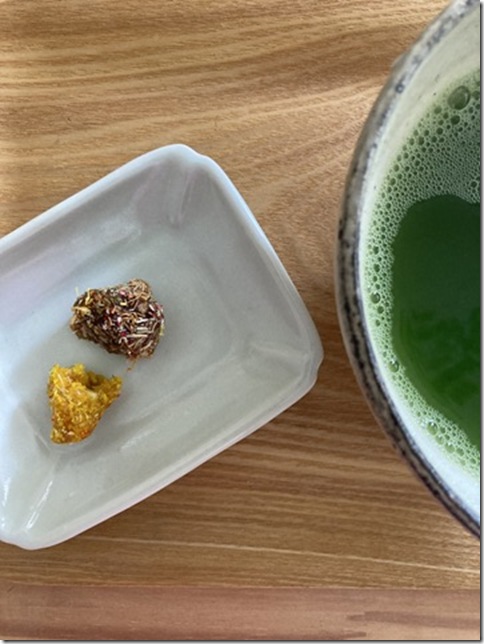
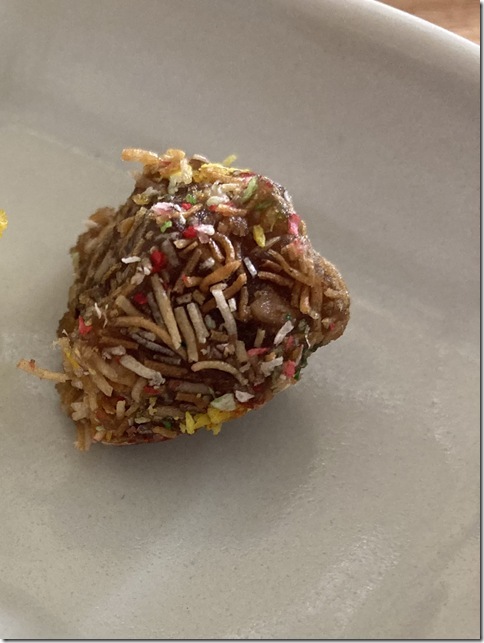



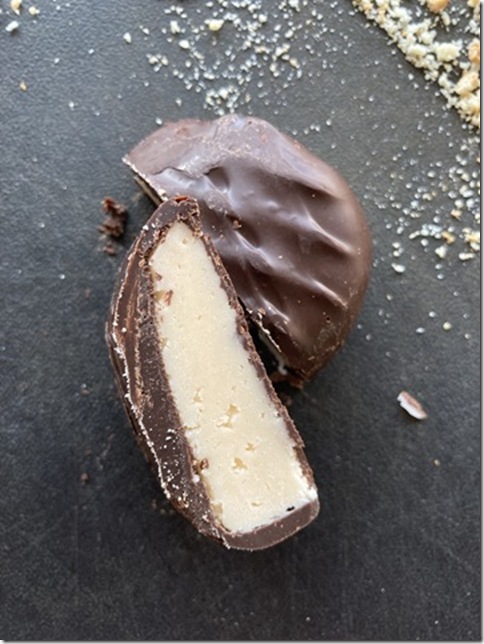
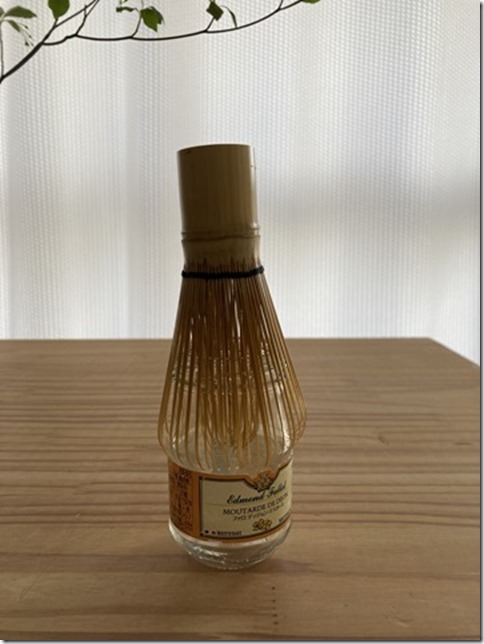

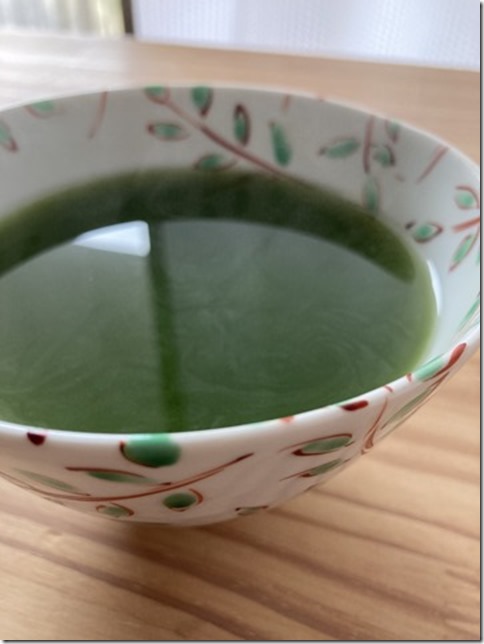
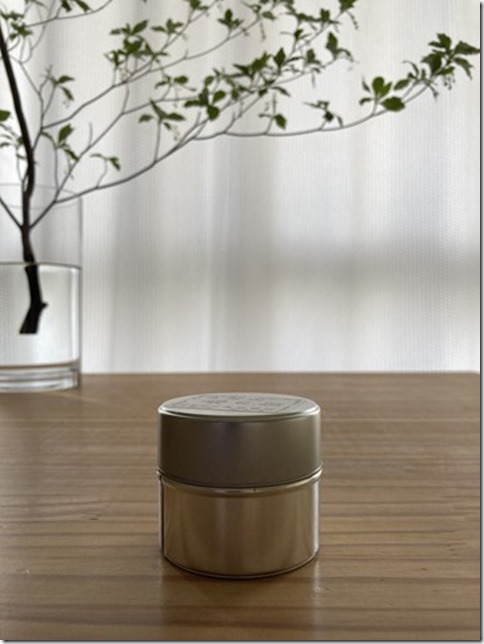
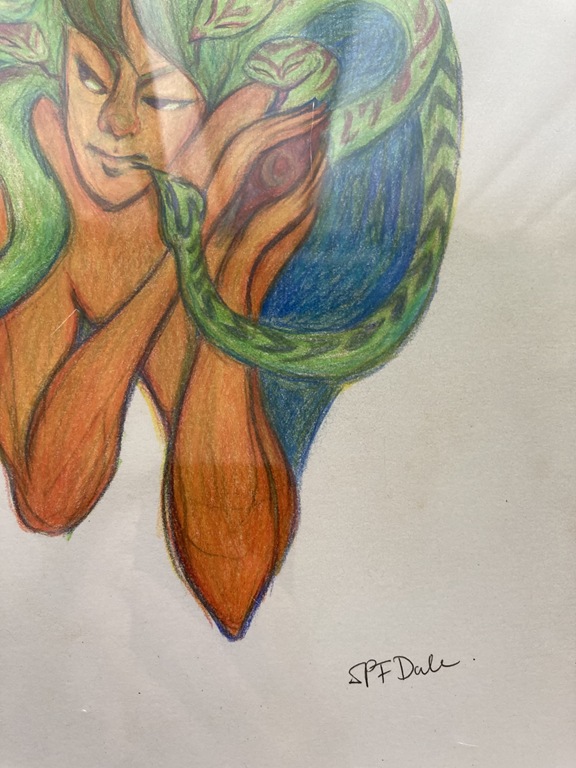 SPF Dale Trust (2024) Colored pencil on paper, approx. 21×29.7cm Price: ¥13,200 + shipping
SPF Dale Trust (2024) Colored pencil on paper, approx. 21×29.7cm Price: ¥13,200 + shipping